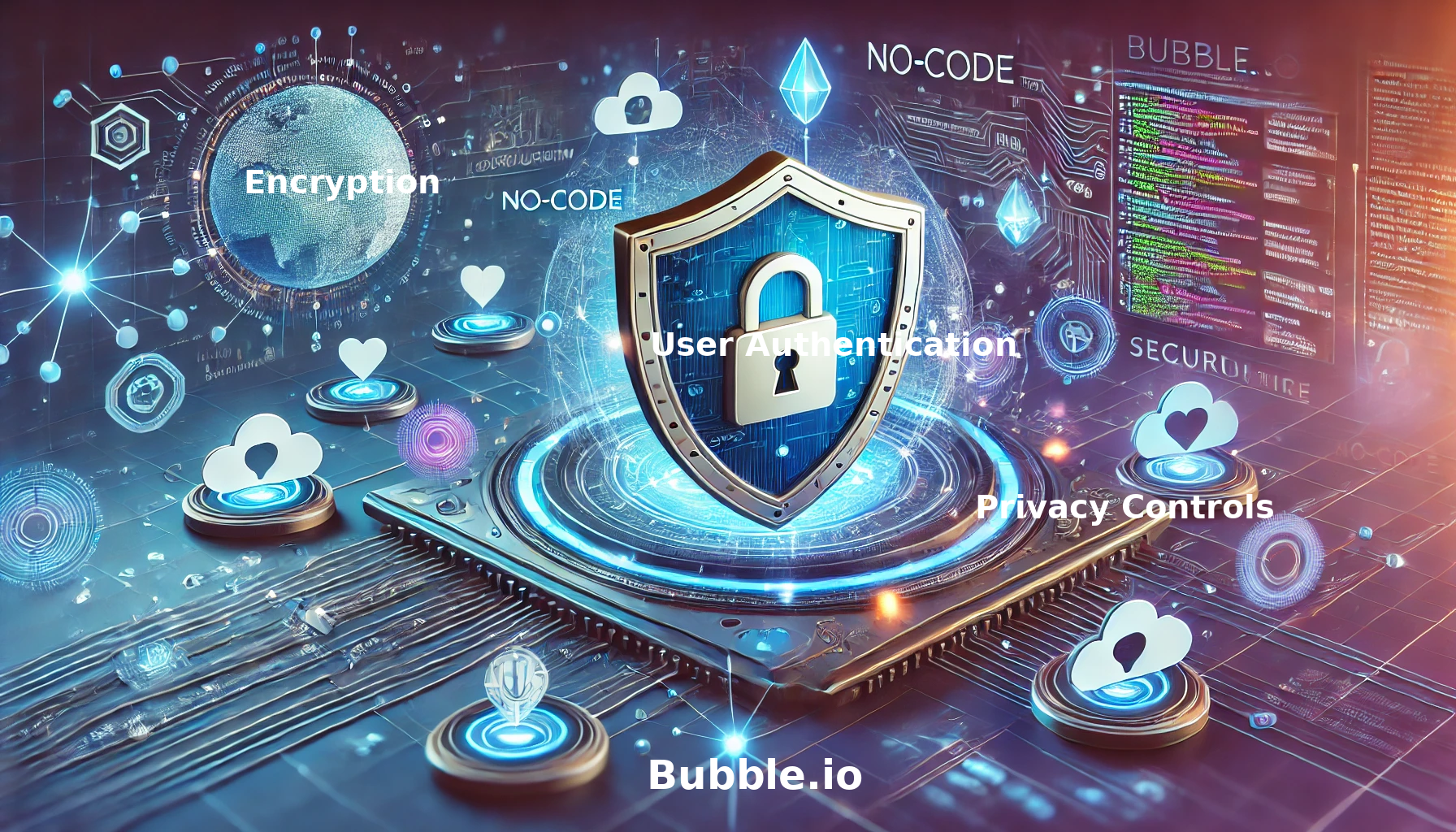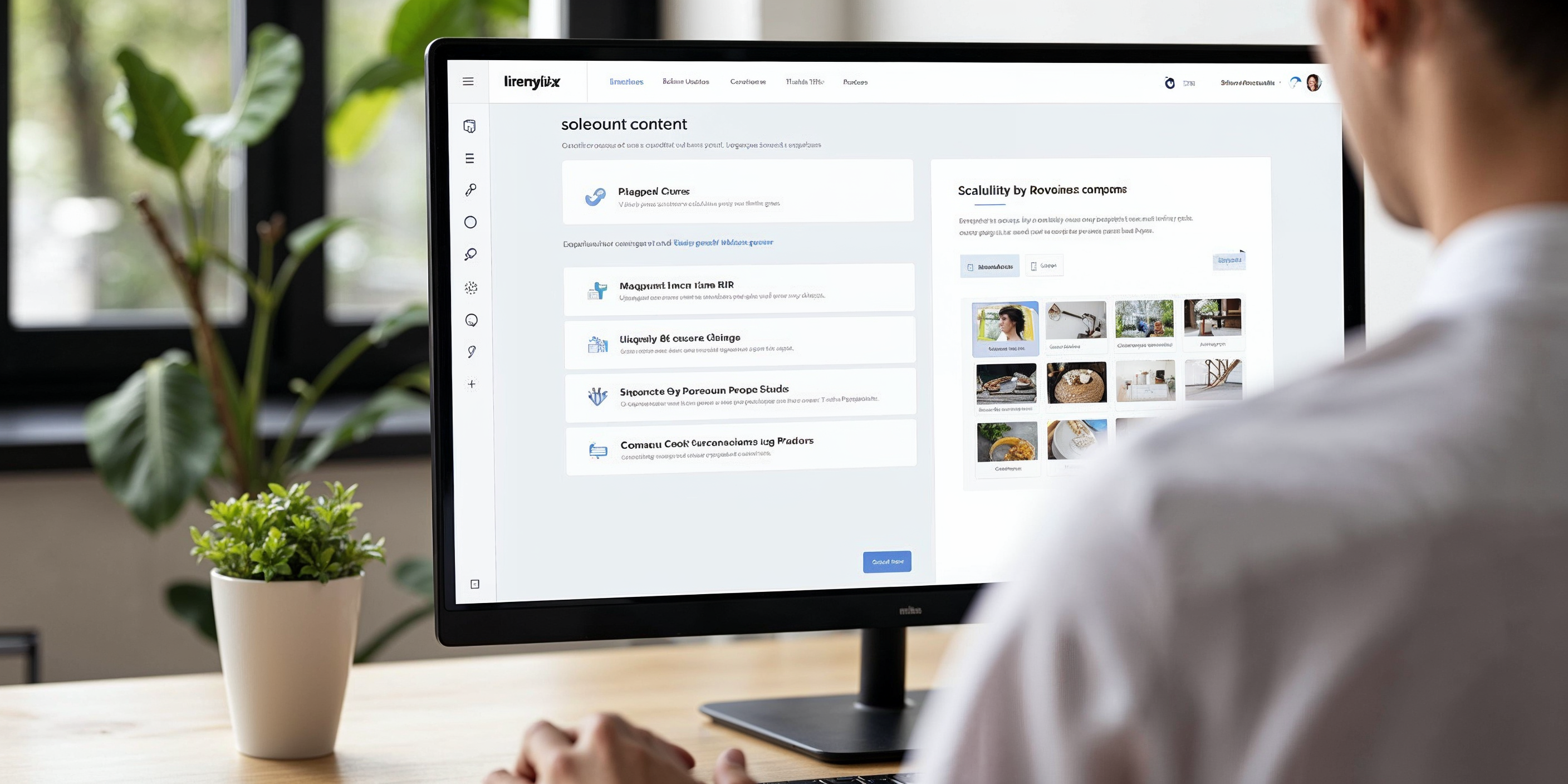
.png)
Understanding the Security of Bubble: Building Secure Applications in a NoCode Environment
Published on February 8, 2025
By Christiam Muñoz . 10 minute read
As the demand for NoCode and LowCode development platforms continues to rise, many businesses and developers of all ages are exploring tools like Bubble.io to create applications without extensive coding knowledge. However, security remains a paramount concern, especially when targeting corporate clients. This article will delve into the security features of Bubble.io and provide insights on how to develop secure applications using this powerful NoCode tool.
The Security Framework of Bubble

Bubble.io is designed with a comprehensive security framework that adheres to industry standards. Understanding its security features is crucial for developers and businesses looking to build secure applications. The Bubble.io community actively contributes to maintaining and improving security practices by sharing experiences, asking questions, and providing feedback.
1. Data Protection Measures
Bubble allows developers to choose from several robust data protection measures:
Encryption: All data transmitted between users and Bubble’s servers is encrypted using HTTPS (TLS). Data at rest is secured with AES-256 encryption, ensuring that sensitive information is protected from unauthorized access.
User Authentication: Bubble’s built-in user authentication system includes password hashing, salting, and encryption. It also supports two-factor authentication (2FA) and single sign-on (SSO) capabilities, enhancing security by requiring multiple verification steps for user access.
Privacy Controls: Users can define granular privacy settings, allowing them to control access to different data items. This feature helps prevent unintended exposure of sensitive information.
Compliance and Design Best Practices
Bubble.io adheres to various compliance standards, including SOC 2 Type II and GDPR regulations. These certifications indicate that Bubble has implemented measures to protect user data and maintain high levels of security. The beauty of Bubble.io's compliance with industry standards lies in its commitment to ensuring user data protection.
Additionally, Bubble undergoes regular penetration testing to identify vulnerabilities before they can be exploited. This proactive approach helps ensure that the platform remains secure against future emerging threats.
Bubble.io Security Features and Protocols
Bubble.io takes security seriously, ensuring that users’ applications are protected from potential threats. The platform implements various security features and protocols to safeguard user data and prevent unauthorized access. Some of the key security features include:
Data Encryption: Bubble.io uses industry-standard encryption protocols to protect user data both in transit and at rest. This ensures that sensitive information remains secure, whether it’s being transmitted over the internet or stored on servers.
Access Controls: The platform provides robust role-based access controls, allowing users to manage who can access and modify their applications. This granular control helps prevent unauthorized changes and data breaches.
Authentication and Authorization: Bubble.io employs secure authentication and authorization protocols to ensure that only authorized users can access and modify applications. Features like two-factor authentication (2FA) and single sign-on (SSO) add additional layers of security.
Regular Security Updates: The platform regularly updates its security protocols to stay ahead of potential threats and vulnerabilities. By keeping the system up-to-date, Bubble.io ensures that users benefit from the latest security enhancements.
Compliance with Industry Standards: Bubble.io complies with industry standards and regulations, such as GDPR, to ensure that user data is protected. This compliance demonstrates Bubble.io’s commitment to maintaining high security standards.
By implementing these security features and protocols, Bubble.io provides a secure environment for users to create and launch their applications. This comprehensive approach to security ensures that applications built on Bubble.io are well-protected from potential threats, giving users peace of mind as they develop and deploy their projects.

While Bubble provides a solid security foundation, developers must also be aware of common security threats and how to mitigate them effectively. It is crucial to find and address these threats to ensure the safety and integrity of your Bubble.io applications.
1. Cross-Site Scripting (XSS) Attacks
XSS attacks occur when malicious scripts are injected into web applications, potentially compromising user data. Bubble mitigates this risk by automatically escaping user-generated page content, which reduces the likelihood of XSS vulnerabilities.
2. SQL Injection
Although traditional SQL injection attacks are less likely in a NoCode environment like Bubble, developers should still be vigilant. By abstracting away the need for direct SQL queries through its NoCode database system, Bubble minimizes the risk of SQL injection attacks.
3. Data Exposure
Misconfigured privacy rules can lead to unintended data exposure. To help combat this risk, developers should regularly review privacy settings and ensure that only necessary data is exposed while sensitive information remains protected with love and care.
Common Security Mistakes to Avoid in NoCode Development
NoCode development platforms like Bubble.io have made it easier for users to create and launch applications without extensive coding knowledge. However, this also means that users may be more prone to making security mistakes. Here are some common security mistakes to avoid in NoCode development:
Not Validating User Input: Failing to validate user input can leave applications vulnerable to attacks such as SQL injection and cross-site scripting (XSS). Always ensure that user inputs are properly validated and sanitized to prevent malicious code from being executed.
Not Using Secure Protocols: Using insecure protocols such as HTTP instead of HTTPS can put user data at risk. Always use HTTPS to encrypt data in transit and protect it from interception.
Not Keeping Software Up-to-Date: Failing to update software and plugins can leave applications vulnerable to known security vulnerabilities. Regularly update your Bubble.io application and any third-party plugins to ensure you have the latest security patches.
Not Using Strong Passwords: Using weak passwords can make it easy for attackers to gain unauthorized access to applications. Enforce strong password policies and encourage users to use complex, unique passwords.
Not Monitoring Application Activity: Failing to monitor application activity can make it difficult to detect and respond to security incidents. Implement logging and monitoring tools to keep track of user activity and identify any suspicious behavior.
By avoiding these common security mistakes, users can ensure that their applications are secure and protected from potential threats. Taking proactive measures to address these issues will help maintain the integrity and security of applications built on NoCode platforms like Bubble.io.
Best Practices for Building Secure Applications with Bubble

To maximize the security of applications built on Bubble.io, developers should adhere to best practices throughout the design and development process. It is crucial to build security measures from scratch to ensure robust protection against potential threats.
Implement Strong User Authentication Code
Utilizing strong authentication methods is essential for protecting user accounts. Developers should enforce password complexity requirements, enable 2FA, and consider implementing SSO for corporate clients.
2. Regular Security Audits
Conducting regular security audits helps identify vulnerabilities within the application. Developers should review logs for unusual activity and perform routine checks on privacy settings and user permissions.
3. Role-Based Access Control (RBAC)
Implementing RBAC allows developers to assign specific permissions based on user roles. This principle of least privilege ensures users have access only to the information necessary for their tasks, reducing the risk of unauthorized access.
4. Keep Software Updated
Bubble frequently releases updates to enhance functionality and security. Developers should ensure that their applications are running the latest version of Bubble and that any third-party bubble plugins are also kept up-to-date.
5. Educate Users on Security Practices
User education is vital in maintaining application security. Developers should inform users about safe practices, such as recognizing phishing attempts and using strong passwords. Community support plays a crucial role in educating users on security practices by providing a platform for sharing experiences and asking questions.
Advanced Security Features in Bubble Page

For people and organizations requiring enhanced security measures, Bubble offers several advanced features:
DDoS Protection: Through its partnership with Cloudflare, Bubble provides built-in DDoS protection to safeguard applications from malicious traffic attacks.
Point-in-Time Data Recovery: This feature allows users to restore historical versions of their data in case of accidental deletion or corruption, adding an extra layer of data protection.
Extensive Logging: Bubble maintains detailed logs of application activities, enabling developers to monitor usage patterns and detect anomalies promptly.
Securing funding is crucial for implementing these advanced security features, ensuring that Bubble.io can continue to provide robust protection for its users.
Conclusion

Bubble.io provides a robust platform for developing secure applications without extensive coding knowledge. By leveraging its built-in security features and adhering to best practices, developers can create applications that meet corporate security standards.
While no platform can guarantee 100% security, understanding how to utilize Bubble's capabilities effectively will allow businesses to build trustworthy applications that instill confidence in their clients. As the landscape of NoCode development continues to evolve, prioritizing security will remain essential for success in this growing market.

Accelerating Software Development with Vibe Coding and AI Tools at Kreante

Kreante: Accelerating Your AppDevelopment with Low-Code, AI, and “Vibecoding”




.png)


.svg)
